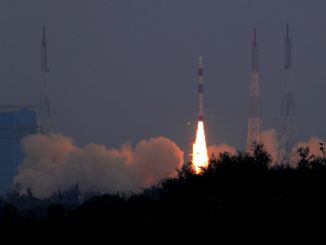The latest batch of images released from the European Space Agency’s Rosetta mission shows the brutal gray landscape of comet 67P/Churyumov-Gerasimenko in vivid detail.
ESA posted 1,776 images from Rosetta’s navigation camera on the agency’s website Thursday, adding to a growing catalog of imagery of comet 67P since the probe arrived in August 2014. The photo set includes images taken from Sept. 23 to Nov. 21, a period in which Rosetta approached within 8 kilometers — or 5 miles — from the comet’s craggy nucleus.
Rosetta carries two cameras: A navigation camera primarily used to guide the spacecraft around the vicinity of the comet, and a sharp-eyed science camera used to obtain high-resolution pictures of comet 67P’s rock-ice core.
Access the complete NAVCAM archive on ESA’s website.





Email the author.
Follow Stephen Clark on Twitter: @StephenClark1.



